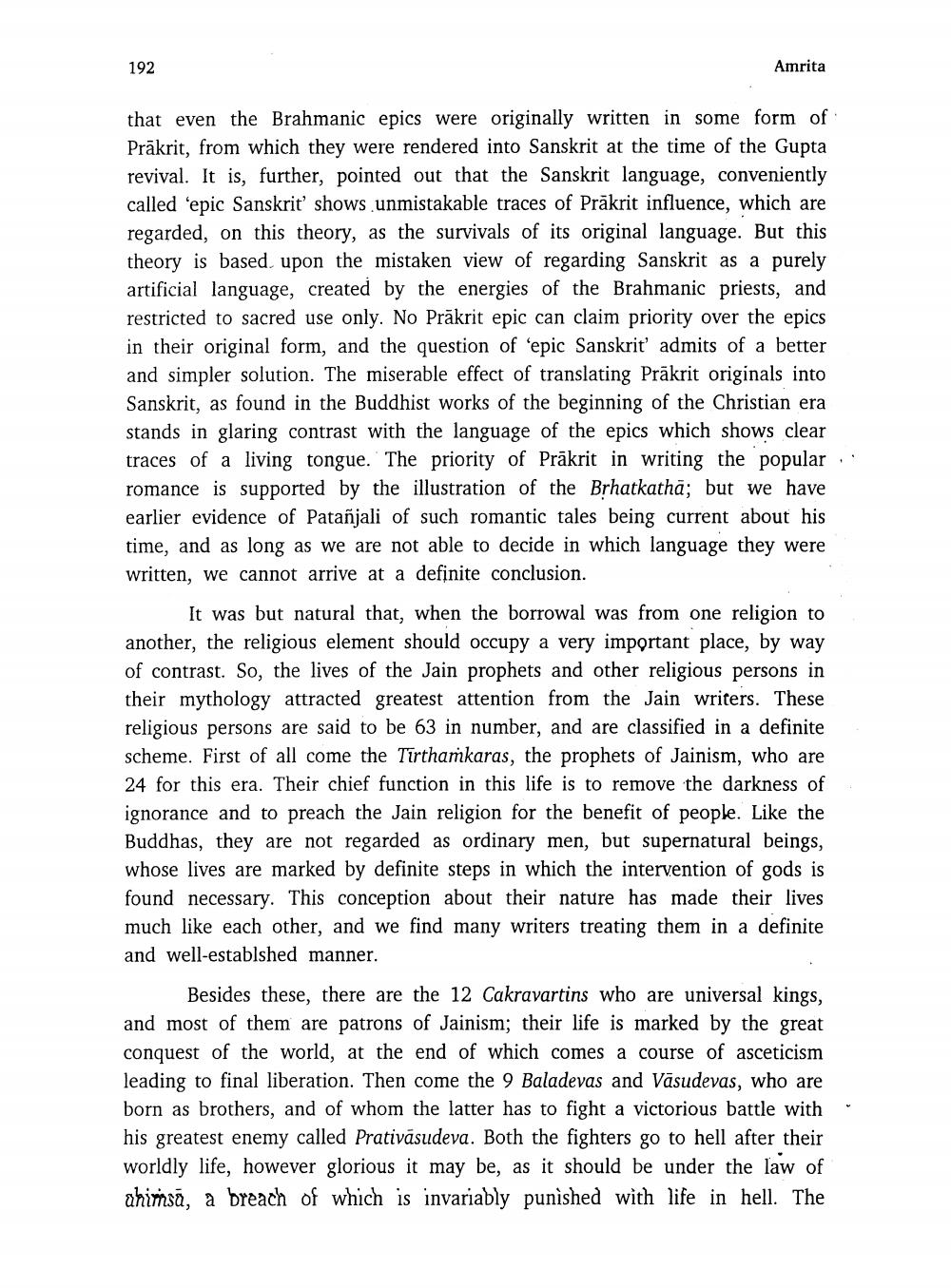________________
192
Amrita
that even the Brahmanic epics were originally written in some form of Prākrit, from which they were rendered into Sanskrit at the time of the Gupta revival. It is, further, pointed out that the Sanskrit language, conveniently called 'epic Sanskrit shows unmistakable traces of Prākrit influence, which are regarded, on this theory, as the survivals of its original language. But this theory is based upon the mistaken view of regarding Sanskrit as a purely artificial language, created by the energies of the Brahmanic priests, and restricted to sacred use only. No Prākrit epic can claim priority over the epics in their original form, and the question of epic Sanskrit admits of a better and simpler solution. The miserable effect of translating Prākrit originals into Sanskrit, as found in the Buddhist works of the beginning of the Christian era stands in glaring contrast with the language of the epics which shows clear traces of a living tongue. The priority of Prākrit in writing the popular, romance is supported by the illustration of the Brhatkathā; but we have earlier evidence of Patanjali of such romantic tales being current about his time, and as long as we are not able to decide in which language they were written, we cannot arrive at a definite conclusion.
It was but natural that, when the borrowal was from one religion to another, the religious element should occupy a very important place, by way of contrast. So, the lives of the Jain prophets and other religious persons in their mythology attracted greatest attention from the Jain writers. These religious persons are said to be 63 in number, and are classified in a definite scheme. First of all come the Tirthamkaras, the prophets of Jainism, who are 24 for this era. Their chief function in this life is to remove the darkness of ignorance and to preach the Jain religion for the benefit of people. Like the Buddhas, they are not regarded as ordinary men, but supernatural beings, whose lives are marked by definite steps in which the intervention of gods is found necessary. This conception about their nature has made their lives much like each other, and we find many writers treating them in a definite and well-establshed manner.
Besides these, there are the 12 Cakravartins who are universal kings, and most of them are patrons of Jainism; their life is marked by the great conquest of the world, at the end of which comes a course of asceticism leading to final liberation. Then come the 9 Baladevas and Vasudevas, who are born as brothers, and of whom the latter has to fight a victorious battle with his greatest enemy called Prativasudeva. Both the fighters go to hell after their worldly life, however glorious it may be, as it should be under the law of ahimsā, a breach of which is invariably punished with life in hell. The




